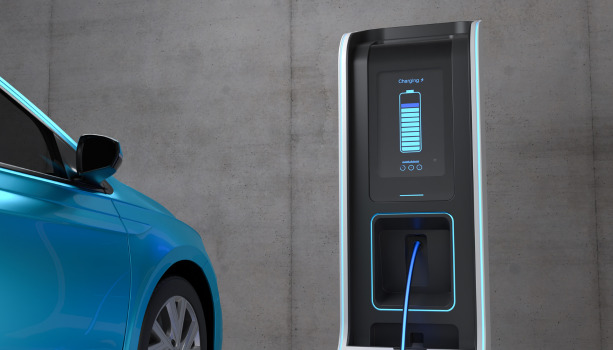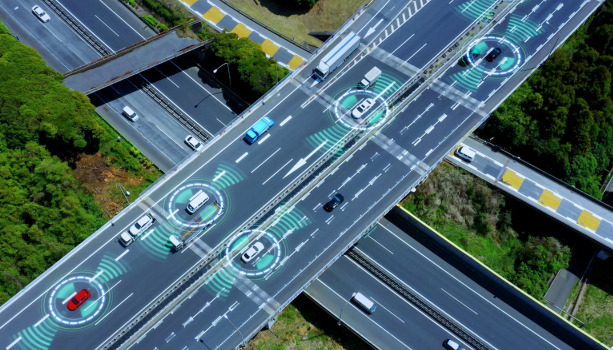IoT, Connected Vehicles, and Transport Security
As IoT technology advances, we start to wonder if the security around the technology is sufficient enough. The time has come to assume that people with somewhat accessibility to IoT devices know how it should have stronger security than ICT security as it can directly affect and control the devices and cause actual and physical damages when exploited.
Autonomous Security and Regulative Security
Simply put, there are basically 4 areas that need security in the IoT environment: 1) smart home, 2) smart factory, 3) smart car, and 4) smart energy grid.
1) and 2) tend to have the nature of being autonomous. Users can decide whether they need IoT implementations and if or when they do, they get to make their own decision of whether their implementations need security applications or not. In terms of factories, it is critical to apply security for the sole reason of safety, however, most of the factories haven’t even applied the existing ICT security as we know it.
This is when autonomous security slowly sprawls in as a form of crisis management. Crisis management in the context of IoT security most likely explains why security, of any sort, is applied only after an accident occurs. This is just like how personal computers are secured nowadays, hence most of the IoT security companies are setting their minds on this method. It’s easier and more convenient, as it resembles the ICT security application method rather than the ideal IoT security we expected.
3) and 4) rather have the nature of being regulative. 3) not only threatens the safety of oneself but also for others and 4), in order to allow billing (pay-per-use of energy) to be programmed fairer, it is critical to have strict management and security supervision. Therefore, regulatory security can innovatively be applied as a method of pre-emptive security.
After all, being pre-emptive is all about minimizing the risks and threats after deciding to deploy security measures in the very early stages, like when designing the entire system, in the first place. It’s inevitable in order to prevent hazards and unfair charges. It’s similar to constructing private networks for the existing major infrastructures like the nuclear power plants, where they are only operated once enough security has been applied throughout the system and the network. It is established on a nationwide scale as an infrastructure, which is perceived as an integral technology application process.
IoT Security as Life Security
Since IoT is a combination of the existing IT security and OT (operational technology) it has higher risks of suffering from physical damages when failed to protect from threats. Therefore it follows rather stricter rules and regulations compared to OT, which definitely needs closed-security by blocking any risks prior to connection.
If failed to accomplish proper IT security, the losses are exploited assets at most, however, in OT security, it could end up threatening human lives. Let’s take a look at vehicles. Everything that has to do with insufficient vehicle security threatens safety. Remotely controlling the steering wheel or locking the vehicle, changing the speed and stopping the engine, and manipulating the GPS location – all these examples have actually been carried out by hackers.
Therefore security in vehicles means more than just protecting the vehicles. Many countries are establishing and practicing vehicle security-related regulations. The US has announced strict regulations such as ‘SELF DRIVE Act’, ‘DoT Guideline’, ‘AV START Act’, and the EU as well with their own ‘EC C-ITS’ business, smart car cybersecurity-related recommendations by ‘ENISA’, in addition to the UK’s ‘Smart Car Cybersecurity Guideline’, ‘Vehicle Security Authentication Framework’ by EC, and ‘Vehicle Cybersecurity Principles’ by ACEA. In China, the government has established the ‘Vehicle Security Committee’ in 2016 and proceeded with its ‘China Cybersecurity Law’ since 2017.
Vehicle Security is Transport Security
However, vehicle hacking cannot be completed just by its in-vehicle security features therefore it is more about the overall transport security rather than protecting the vehicle itself. As vehicles become smarter and connected, their ‘simple internet connection’ is transforming to allow the vehicle to become a ‘transport network direct participant’ and now is on its way to universalization thanks to the development of 5G.
It is critical to deploy V2X (vehicle-to-everything) communications security that is not only related to internal security but also other vehicles and intelligent transport systems like C-ITS. As a matter of fact, it needs to have the capability to support edge computing security, V2D (vehicle-to-device) mobile integration security, V2G (vehicle-to-grid) electric vehicle ecosystem security in order to fully accomplish the vehicle security system. Vehicle security is just like basketball’s full-court press, and it deals with the entire transport system’s safety, via its whole-system approach.
On the other hand, the existing vehicle security is mostly about securing a simple internet connection, which explains the reason for the deployment of telematics server security, terminal security, and general web security. However, as the vehicle directly starts to participate in the transport network, the security also transforms itself to ‘transport security’.
Vehicles also become connected to other vehicles, smart roads, and transport systems like RSU and C-ITS via V2X as well as to energy services such as EV charging systems and electrical grid via V2G. It is only feasible when there is technical infrastructure including the existing ICT security and new technologies such as V2X and V2G, as well as distinct features of EV and PnC (plug-and-charge). In other words, this well explains the high barrier for new entrants to the market.
The Future of IoT Security
There sure are other areas to look into in transport-related systems. In addition to the developments of vehicles and transport systems like C-ITS, the EV market is foreseen to be taking over the fuel market and expand and grow as much as the potentials of services and technologies. The EV market is not only about the vehicle itself, but also about the energy grid like the smart meter and forms the entire infrastructure.
The industry also requires a higher level of technologies like ‘internet of things’ authentication or decision making due to the process limitations of central management and efficiency. We believe it’ll eventually lead to the development of BIoT (Blockchain + IoT) and guide the competitive edges. Therefore, unlike the existing ICT security where issues were resolved by only taking financial responsibilities, IoT security could really have an impact on people’s lives. So the question is – the industry is evolving, but is the security really sufficient?



